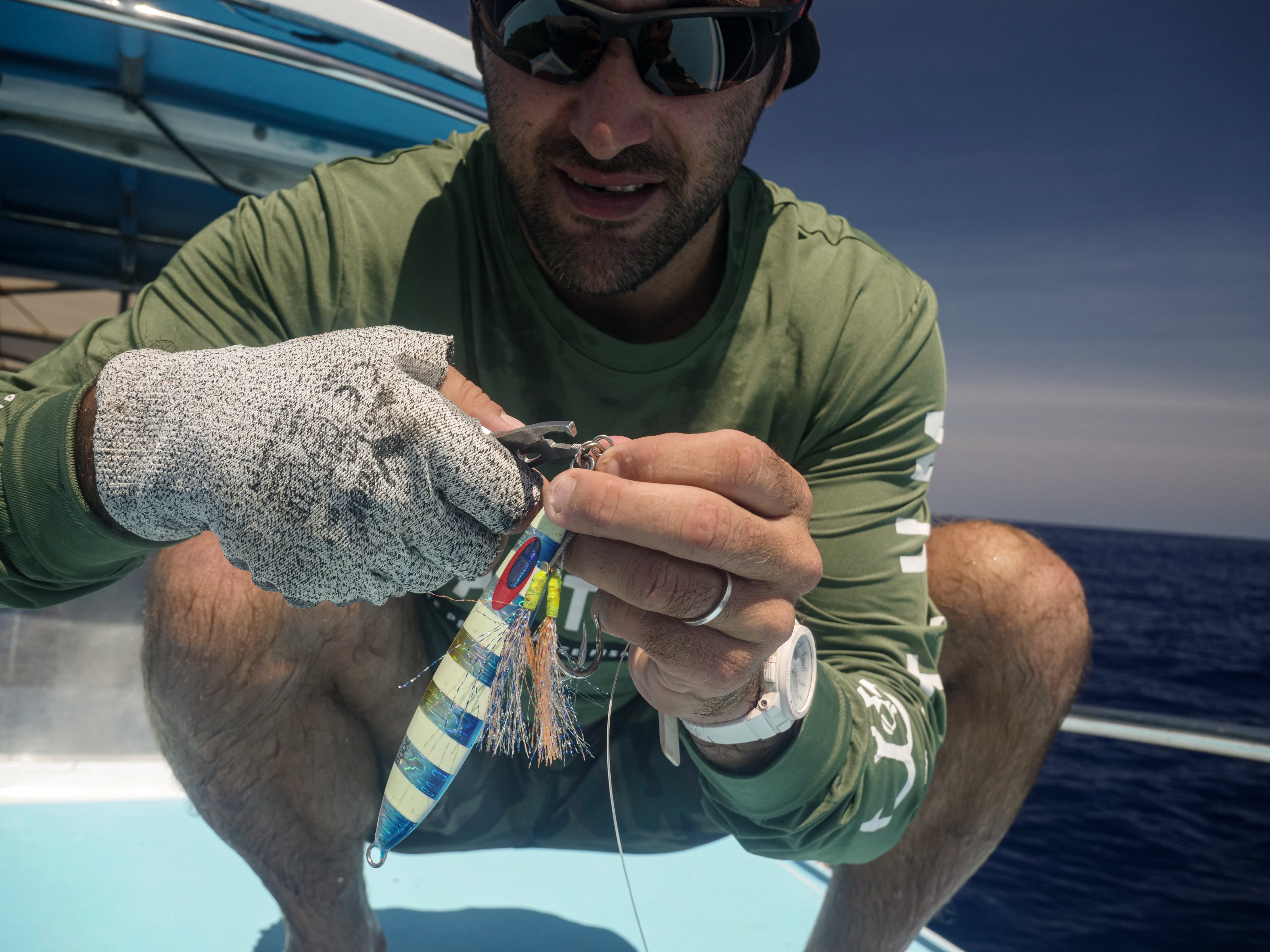Table of Contents
Ever have those fishing trips where the weather is perfect, you’re at the best possible position, and you’re casting your rod in all the right places, but fish still aren’t biting? If you’ve had those moments, it could be a problem with your bait presentation. Read on to see how you can solve this issue!
For bass fishers: Location and retrieve
Ultimate Bass talks about three key locations to find bass: (1) where they rest, (2) where they feed, and (3) where they might stop for a quick snack. Fortunately, these are all easy to find as the signs are all over the place.
Just like most fish, bass like to eat “in the early morning and at dusk.” This means that during those times, you need to be where they feed: places where there is cover to hide and wait for prey to pass by. You can do this by simply thinking about which areas in the water have objects that can conceal them.
Later in the day, bass will most likely travel to places they can take a break in: deeper waters where there are “larger rocks, a single stick up, or even a bend in the road” that they can use for navigation. Keep your eyes peeled for these signs and be aware of the times you fish and you’ll start getting used to it in no time.
Other than location, though, retrieve speed, action, and accuracy matter as well; because once you know where the bass are, you then have to attract some bites. In this case, there are no clear-cut guidelines and we have to go through trial and error. Start with a pace that you’re personally comfortable with, and if you’re not getting any bites, continue experimenting with it.
While slower is often better, some bass could give reaction strikes to speedy casts. Get a feel of the speed that gets you bites and work around that. Of course, if you’ve tried everything and still haven’t gotten any, it could be a matter of accuracy! Can’t have fish bite in places where they aren’t there, right? So while you’re at it, practice your casting as well.
For the average angler: Color, sound, and speed
If you’re not fishing for bass in particular, it’s these three things that you need to watch out for. Luckily, they’re much more straightforward.
The general principle for lure color is that you want them to blend in with the waters you’re fishing in. This is why it’s important to have various bait colors in your tackle, just to be ready for any situation. Black, blue, and green are common colors for clear water, while yellow, orange, green are more fitting for slightly stained ones. Brighter, almost neon-like colors such as pink and orange, though, are best for muddy waters.
Next is sound. If you’ve read our blog on whether or not talking scares fish away, you already know that fishes “hear” through vibrations in the water. This is why spinnerbaits, buzzbaits, and the like sometimes attract fish better than anything else. You can also experiment with these lures throughout different fishing trips to see what works best for the fish you like.
Similar to retrieve in the previous section, speed matters in fishing overall. As mentioned before, slower movement is generally the best way to go, especially in cold water where they’re dormant. But in the summertime, fish are more active, and could therefore use faster casts. Meanwhile, they’re right in the middle of dormant and active in the fall; you can cast not too slow, but also not too fast. Just keep at a moderate, steady pace.
Why master bait presentation?
In a World Sea Fishing forum, one member asked how important bait presentation is, and practically everyone who replied talked about it being one of, if not the most important thing about fishing. One even replied, “Presentation is everything mate.” And honestly, we would agree with the sentiment.
You can have the most complete tackle box in the world and access to the best fishing spots, but without proper presentation, fish won’t bite at all. Mastering bait presentation is therefore essential for any good fisherman. Most of all, though, brush up on other fishing basics by reading through our blog!
MOST READ NEWS:
How To Use Your Fishing Records to Catch More Fish
Track your fishing trips, analyze patterns, and refine your techniques with a fishing log to catch more fish on every outing!
Solo Fishing Safety Tips: Stay Safe and Enjoy the Outdoors
Learn essential solo fishing safety tips: gear checklist, boat safety, emergency preparedness, weather monitoring & fishing location scouting. Stay safe on the water.
Secrets to Winter Fly Fishing Success
Master winter fly fishing with expert tips on trout behavior, essential gear, and proven techniques. Learn the secrets to catching more fish in cold weather.
How Cold Water Changes Fish Behavior: Insights for Anglers
Explore how cold water affects fish behavior and fishing techniques, enhancing your angling success and strategy.
Is Tech Making Fishing Too Easy? Exploring Forward-Facing Sonar (FFS)
Learn about forward facing sonar in fishing - what it is, how it works, rules for tournaments, ethics, and tips for finding fish with this game-changing technology.
Plan Your Best Fishing Trip Yet this 2025: A Complete Guide
Plan your fishing trip this off-season. Learn to choose destinations, prep gear, pick bait, and trust Baitium for expert tools and tips!
15 Fishing Resolutions for 2025: Set Yourself Up for Success
Discover 15 essential fishing resolutions for 2025: tackle organization, gear maintenance, angling techniques, conservation tips, tournament prep, and fishing safety guidelines.


